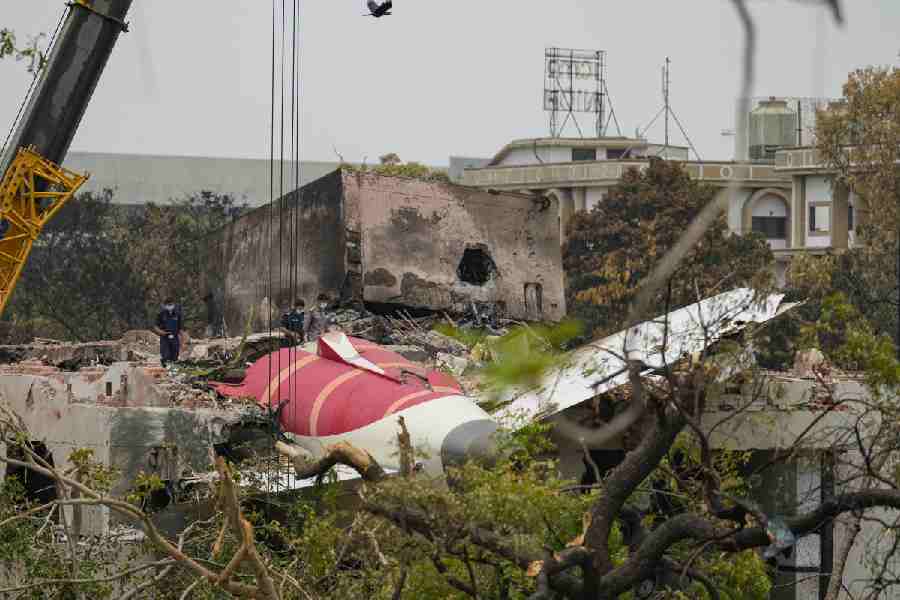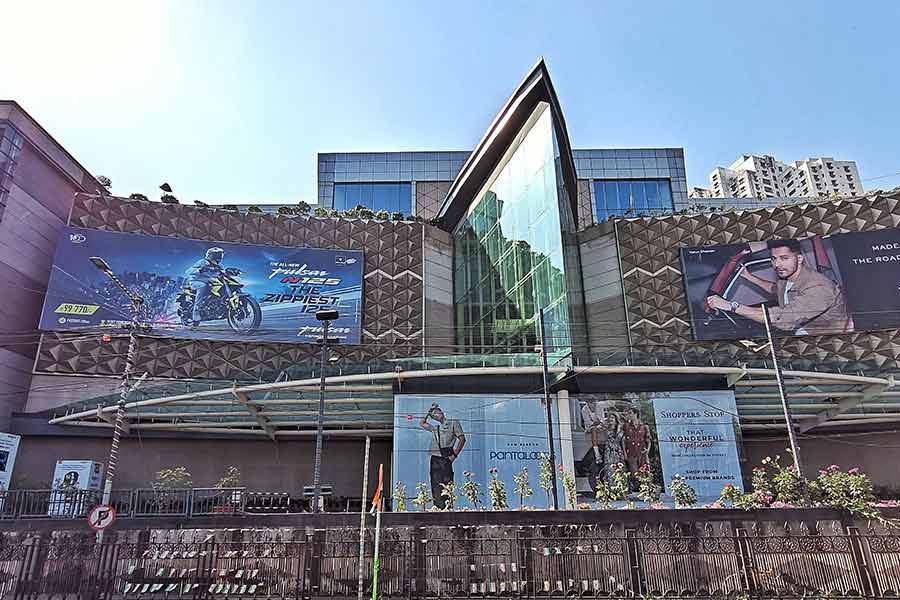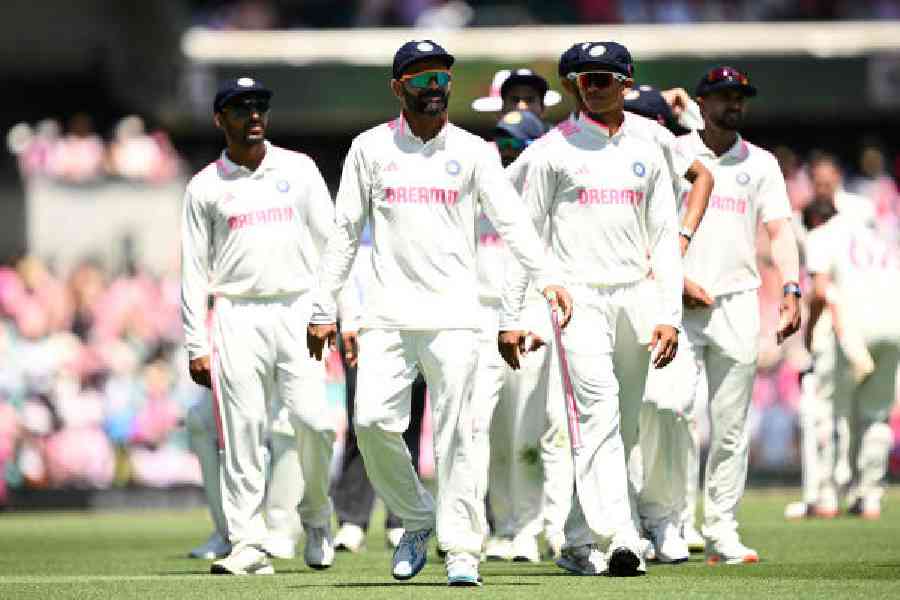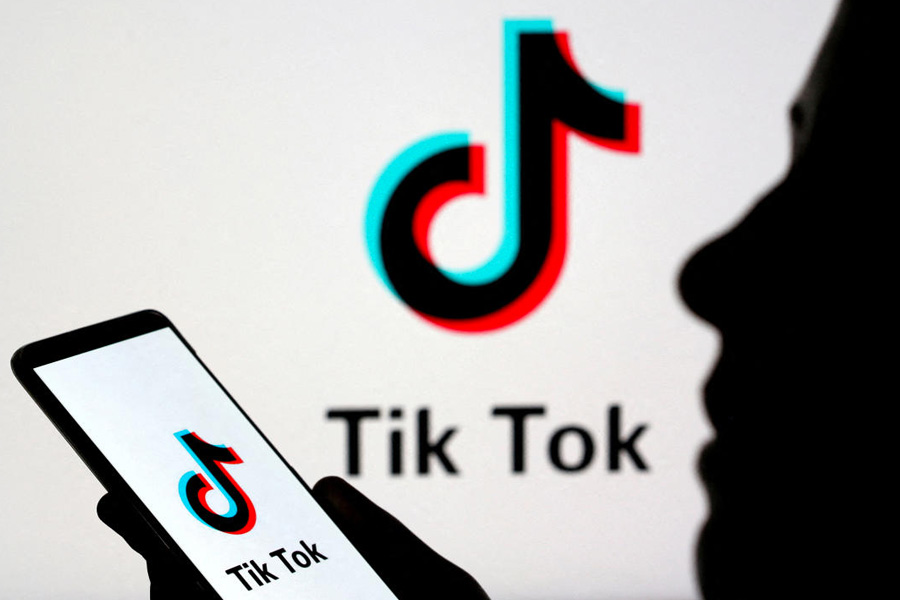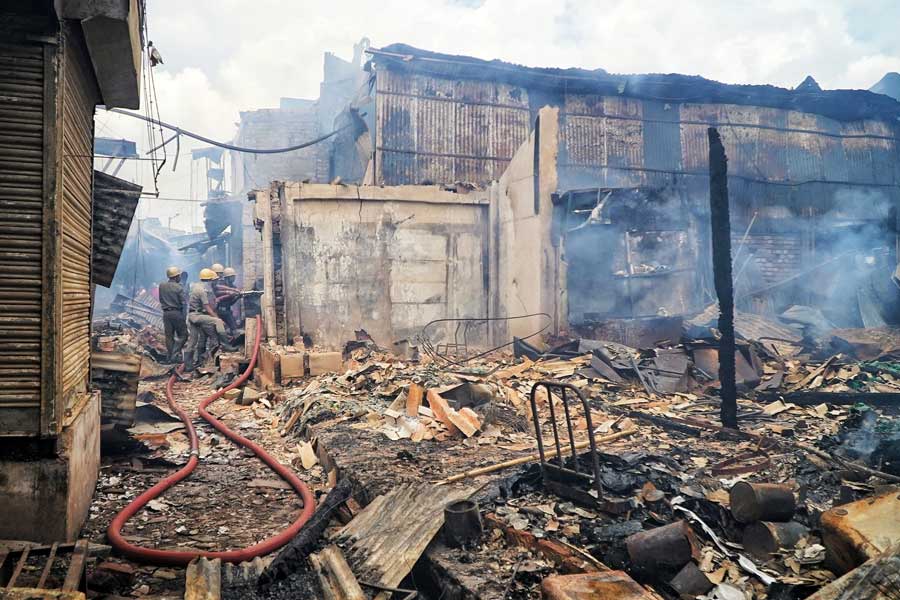 |
 |
| (Top) Riot policemen rush out to disperse protesters in Kathmandu on Saturday. (Above) An injured policeman is led away by a colleague. (AP, Reuters) |
Kathmandu, Jan. 21: A brickbat sails over the Carpe Diem music store and thuds against the fibreglass shield of a riot policeman. That was around 2.15 in the afternoon. As of this evening, it is the Freak Street Revolution in Kathmandu off Durbar Square where LSD used to be sold on the cheap.
It is a cry for democracy for Delhi, a battle in the Nepali capital, a skirmish in Nepal and just about noteworthy elsewhere. India is hoping it is the second coming of a “Kathmandu Spring”, the catchphrase to describe the 1990 events when King Birendra agreed to a constitutional monarchy.
“Gyane chor, desh chhod” (Gyane ? King Gyanendra ? the thief, quit the country), the slogan raised in unison or solitary, inevitably announces the arrival of more brickbats.
Freak Street is one of the four roads leading into Durbar Square, Basantapur, in the heart of Kathmandu, quite removed from Durbar Marg that heads into King Gyanendra’s Narayanhiti Palace.
Handsome Che Guevara T-shirts make fashion statements alongside Tibetan masks and Pashmina shawls in shops here.
But after Friday’s curfew and clampdown, Nepal’s Freak Street Revolution today, where the protesters were the first to dare the royal police, has raised visions of an insurrection in the Kathmandu valley.
From the police barricade where Arghya Bahadur is kneeling down to fire tear gas shells into ripple after ripple of protesters waving red and white flags, this had to happen. “The tear gas burns my eyes too,” he smiles and rushes into duty where he fires more canisters, this time at the crowd on New Road.
Shailesh Pandey, one of the blue-jacketed representatives from the Alliance of Human Rights Organisations of Nepal, says there are more than 10,000 people converging on Durbar Square from the streets leading to it. A platoon of the army has secured Durbar Square while the paramilitary armed police are rushing into each lane and street for ding-dong battles with the protesters.
The pattern is the same everywhere in this square ? at Indra Chowk, Dharma Marg, New Road and Ganga Path as it is on Freak Street. And it is spontaneous. The first-rung leaders are under house arrest. Most of the second- and third-rung leaders have been arrested. No curfew has been announced or enforced.
Every protester with a flag ? the red with the hammer and sickle for the Communist UML or the red and white with the five stars for the Nepali Congress ? is cheered for shouting “Gyane chor?” and courting arrest. Anyone who ascends the pedestal on which is mounted the statue of a former Prime Minister of the Rana regime and gives an impromptu speech is lustily applauded.
Brickbats invite tear gas shells. The more daring of the protesters hurl the canisters back at the police. The police and the mobs break for water, wet their handkerchiefs, dab the eyes, splash their faces and are back in action.
At Bhutaity and Asan, on the roads leading to Basantapur, there is an ebb and tide in the flow of the crowds. On Freak Street, they come in little waves, again and again.
“Gyane chor?” ? by one account in the local press King Gyanendra has not only monopolised political power, he has also been acquisitive. In the past year he has acquired a fleet of cars, including Nepal’s only Jaguar stretch limousine. He drives it on the grounds of the palace.
For a few minutes, the protesters actually converge on Durbar Square. That is when the officer of the army platoon asks his boys to cock their rifles. Then the police fire more tear gas, hurl back the brickbats and beat the protesters back into Asan.
It is nice weather for the protest. Crisp, cold and sunny. It is picturesque too. And just beyond this ancient square of Kathmandu, the rest of the city that is overlooked by snow-capped mountains is quite unaware. The Nanglo Caf? Pub on Durbar Marg, a popular haunt for tourists, has beaten down the price of chilled Carlsberg Beer to Nepali standards and is full of local clientele.
But out there, beyond the green of Ratna Park, there are madding crowds, jumping, hurling, shouting, cheering. At the Caf? De Cosmopolitan on the junction of Freak Street and Durbar Square, tourists have fled in a hurry, the drinks still on the tables.
There is a certain esprit de corps in the crowd on Freak Street and a certain euphoria to political protest in Nepal that is quite unmatched in India. Here, people seem happy to be protesting. Must be something to do with the weather.
There are people here today who were locked up in the Gaushala Dharamshala or were stranded at the Kalanki checkpoint on the border of Kathmandu yesterday.
But most of the protesters are definitely urban. There is little doubt that like the rest of Nepal, the people of Kathmandu are making their choice. King Gyanendra is not favoured.
After yesterday’s enforced silence, Kathmandu today is effervescent. Around Durbar Square and the ancient royal seat of Hanuman Dhoka, on New Road, Dharma Path and Ganga Path, there are people out on the streets leading themselves, crying for an elusive democracy.
But the Freak Street Revolution is yet to achieve a Kathmandu Spring.





